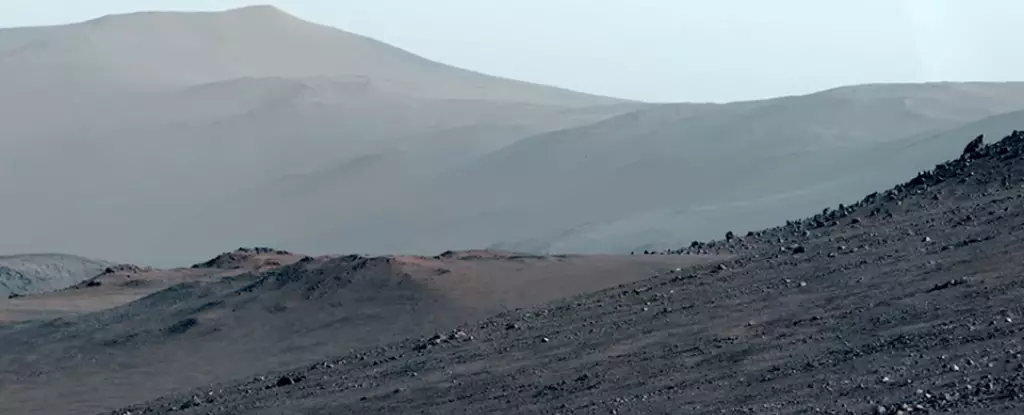In 2018, the National Aeronautics and Space Administration (NASA) embarked on a pivotal journey by selecting the Jezero Crater as the landing site for its Perseverance rover. This decision was no accident; Jezero Crater is a geological treasure, representing an ancient lakebed, complete with a delta fan that suggests a past where water flowed and sediment was deposited over millennia. On Earth, similar geological features illustrate the transformative power of water, making the crater an appealing candidate for the search for biosignatures—indications of past or even current life forms.
As examinations of Jezero Crater commence, the implications of its unique geology stretch beyond mere curiosity. The delta is rich in clays, which serve as significant markers in the quest for signs of life, aligning with the overarching mission objectives of Perseverance. This not only heightens the excitement within the scientific community but also underscores the potential for groundbreaking discoveries that could reshape our understanding of Martian history.
Ascending the Rim: Perseverance’s New Chapter
Fast forward to recent events, and we see a tangible progression in the Perseverance mission. The rover successfully ascended to the rim of Jezero Crater, specifically a region dubbed Lookout Hill. Over a lengthy period of three and a half months, it covered an impressive vertical distance of approximately 500 meters (1,640 feet), all while conducting various scientific observations. Cresting the rim symbolizes not just a physical triumph but marks a strategic evolution in the mission—the initiation of what the team refers to as the Northern Rim campaign.
This campaign not only extends the rover’s exploration into new geological territory but also embodies a significant transition in its scientific narrative. As Perseverance stands at the brink of this new journey, it is set to travel approximately 6.4 kilometers (4 miles) and survey up to four geological sites. Each site holds the promise of revealing insights from Mars’ ancient past.
The history encapsulated within the Jezero Crater is nothing short of extraordinary. Ken Farley, a project scientist, elaborated on the importance of the Northern Rim campaign, highlighting the distinctions between the rock formations found at the crater’s base versus those at the rim. While the lower layers consist of materials formed by the massive impact that created the crater approximately 3.9 billion years ago, the rim unveils Martian crustal fragments tossed skyward during that cataclysmic event.
Examining these ancient rocks could provide a clearer picture of Mars’s early environment, offering parallels to our own planet’s formative years. What lay atop the crater’s edge, thus, holds the key to answering broader questions about the solar system’s geological and ecological evolution.
As Perseverance transitions away from its initial position at Lookout Hill, the rover has set its sights on a rocky outcrop known as Witch Hazel Hill. This site is critical; it features approximately 100 meters of layered rock, with each stratum acting as a chronicle of unique Martian environmental conditions. The exploration here allows the rover to trace ancient time periods, mapping out the transitions in Mars’s climate and possibly unveiling indications of life in an era when conditions may have been more hospitable.
Following the descent, the rover plans to head south toward a region called Lac de Charmes. This area captures scientific interest due to its lesser exposure to the impact that formed Jezero Crater, presenting pristine layers that hold the potential to uncover Mars’s untouched geological past.
Looking ahead, the rover is expected to venture back up the rim to a previously impacted outcrop that may be remnants of ancient bedrock reshaped by significant cosmic collisions. By probing into this megabreccia, we can glean insights into a critical geological period marked by extensive erosion and activity, the Noachian Period.
The pursuit of biosignatures from this age—when conditions were warmer and wetter—represents the core of Perseverance’s mission. The rover embodies humanity’s quest not just for knowledge of Mars but for understanding the origins of life itself.
In a recent briefing, Steven Lee, the deputy project manager for the Perseverance mission, praised the team’s adept navigation through some of the most rugged terrain since the rover’s landing. Innovations in their operatory techniques, including testing unconventional driving methods, highlight both the adaptive spirit of the team and the resilience of Perseverance itself.
In sum, the operations within Jezero Crater continue to reinforce the concept of exploration as an evolving journey. With every observation and sample collected, the narrative of Mars unfurls a little more, feeding into the age-old human quest to know whether we are alone in the universe. The excitement surrounding the Northern Rim campaign captures this passion, energizing scientific inquiry and setting the stage for discoveries that may rewrite the history of life beyond Earth.

